#Werowocomoco
Explore tagged Tumblr posts
Photo
Sivan Vahki, in Coolidge, Arizona, USA, is associated with the Hohokam culture. It was abandoned around 1450 CE.
Werowocomoco, in Jametown, Virginia, USA, is associated with the Powhatan, an Algonquin-speaking group. It was abandoned in 1609 after run ins with the Jamestown colonists.
Cahokia, in East St. Louis, Illinois, USA, is associated with the Mississippian culture. It was abandoned circa 1350 after several floods and a general collapse of the Mississippian world.
Teochtitlan, in Mexico City, Mexico, is associated with the Aztec. It was conquered by the Spanish in 1521.
Tikal / Yax Mutal, in Guatemala, is associated with the Maya. It peaked in the 200 to 900 CE period and was abandoned before the Spanish arrived.
Omahkoyis ("big tree lodge"), in Edmonton, Alberta, Canada, is associated with the Blackfoot, another Algonquin-speaking group. It was established by 3,000 BCE or perhaps as early as 12,000 BCE and was assimilated by British Canada in the early 19th century.
Qusqu ("boundary stone" or "navel"), in Cuzco, Peru, is associated with the Killke, Quechua, and Inca. It was conquered by the Spanish in 1532.
Uttewas ("white-slope village"), in Old Massett, British Columbia, Canada, is associated with the Haida. It was established during the last ice age (c. 14,000 to 19,000 YBP, or circa 17,000 to 12,000 BCE) and was partially assimilated by British Canada in the mid-19th century.
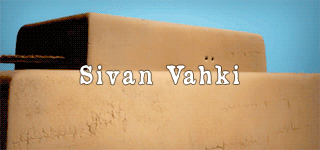
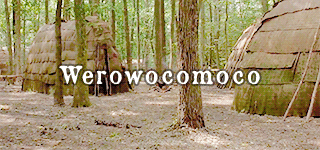

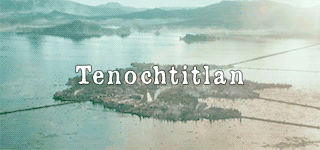
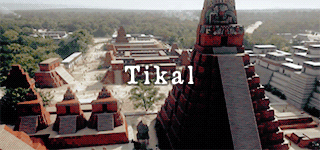

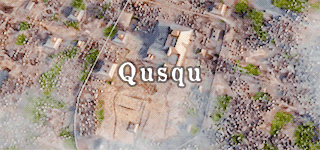
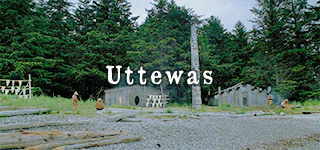
Pre-colonial Native American cities/settlements/meeting sites.
Sivan Vahki: just north of Casa Grande, Arizona, Sivan Vahki or Siwañ Waʼa Ki: was a large farming and trade network site of the Sonoran Desert people starting in the early 13th century.
Werowocomoco: With habitation beginning from the 13th century, Werowocomo was a village that later served as the headquarters of the werowance Wahunsenacah, Paramount Chief of the Powhatan confederacy.
Cahokia: Mississippian culture city dating from circa 1050–1350 CE, containing elaborately planned community, woodhenge, mounds, and burials.
Tenochtitlan: built atop a lake, Tenochtitlan was an Aztec altepetl, and was the largest city in the pre-columbian Americas at its peak. It is considered one of the most impressive cities in North America, and is today known as Mexico city.
Tikal: one of the most powerful ancient kingdoms of the Maya, and dates back as far as the 4th century BC, and may have had a population of up to 90,000.
Omahkoyis: Meeting place and trading and cultural hub for the Blackfoot, and later other tribes as well as settlers. The Blackfoot and their ancestors had inhabited the area as early as 12,000 BC, and would later also be known by other names. Colonizing efforts turned the area into a settlement, known today as the city of Edmonton.
Qusqu: also known as “Cuzco”, the city served as the capital for the Inca Empire from the 13th century up into the 16th century upon colonization. However, evidence shows that The Killke people occupied the region from 900 to 1200 CE, prior to the arrival of the Inca, and had constructed a fortress about 1100 CE.
Uttewas: later known as “Old Masset”, was one of the largest Haida villages on Haida Gwaii, and is home to a number of important cultural artifacts, such as numerous totem poles. Today its land is legally designated as Masset Indian Reserve No. 1.
#Sivan Vahki#Coolidge Arizona#Hohokam#1150#1100s#12th century ce#1450#1400s#15th century#1200s#13th century ce#1300s#14th century ce#Werowocomoco#Jamestown Virginia#Powhatan#Algonquin#1270#1609#13th century#14th century#1500s#16th century#1600s#17th century#Cahokia#East St. Louis#Illinois#Missouri#Mississippi River
1K notes
·
View notes
Text
1623 - Vergiftung von 200 amerikanischen Ureinwohnern durch englische Siedler
Die englischen Kolonisten behaupteten, sie wollten mit den Powhatans Frieden schliessen, und boten ihnen dann verdorbenen Wein an
2008 wurde in West Point, einem kleinen Weiler in Virginias King William County, ein historischer Gedenkstein aufgestellt. Die Gedenktafel steht an einer Kreuzung etwa 20 Meilen nördlich von Williamsburg und trägt den Titel "Indianer vergiftet bei Friedenstreffen". Sie erinnert an einen wenig bekannten Akt kolonialer Doppelzüngigkeit: eine Massenvergiftung, die die Engländer 1623 im Rahmen eines versuchten Attentats auf den Pamunkey-Anführer Opechancanough verübten. "Warum ein Denkmal der Tragödie?", fragte Pamunkey-Häuptling William P. Miles bei der Enthüllungszeremonie. "Indem wir die Vergangenheit erzählen", fügte er hinzu, "führt sie uns in die Zukunft. ... Nicht viele wussten von dieser Vergiftung. Dies wird dazu beitragen, die Geschichte der guten und schlechten Nachbarn zu erzählen". Am 22. Mai jährt sich zum 400. Mal der Tag, an dem englische Soldaten 200 Powhatans, Mitglieder einer Konföderation von etwa 30 indianischen Gruppen, vergifteten Wein gaben. Die historischen Aufzeichnungen sind unklar darüber, wie viele der Vergifteten starben. Aber selbst in einem Krieg, der indigene und koloniale Gemeinschaften verwüstete, war der Vorfall bemerkenswert, weil die Europäer damals glaubten, dass keine zivilisierte Nation im Krieg Gift einsetzen sollte - eine Idee, die später in den Genfer Konventionen umgesetzt wurde.

Stellt die Vergiftung von 1623 ein Kriegsverbrechen dar? Die Antwort auf diese Frage hängt davon ab, was man unter dem Begriff versteht. Die modernen Diskussionen über Kriegsverbrechen begannen nach den Schrecken des Ersten Weltkriegs, die zur Gründung des Völkerbunds und später der Vereinten Nationen und der Genfer Konventionen beitrugen. Die Bemühungen, legitime Regeln für Krieg und Frieden zu definieren, reichen jedoch Jahrhunderte zurück. So veröffentlichte der einflussreiche niederländische Rechtstheoretiker Hugo Grotius 1625 eine dreibändige Meditation über die Kriegsführung, in der er die Frage stellte, "was im Krieg zulässig ist" und "in welchem Umfang". Heute werden Kriegsverbrechen im Allgemeinen als Verstöße gegen die kodifizierten Regeln der Kriegsführung definiert. Die Beispiele reichen von Folter über Geiselnahme bis hin zur Tötung von Kämpfern, die sich ergeben haben. Artikel 8 des Römischen Statuts des Internationalen Strafgerichtshofs stuft den "Einsatz von Gift oder vergifteten Waffen" ausdrücklich als Kriegsverbrechen ein; diese Bestimmung geht auf Grotius zurück, der europäische Rechtsvorstellungen aus der Antike kodifizierte, die den Einsatz von Gift im Krieg als Verbrechen definierten. Dennoch bleibt die Frage offen: Hätten die Europäer im 17. Jahrhundert, die die Powhatans vergifteten, ihr eigenes Handeln als Kriegsverbrechen angesehen? "Urteile über historische Ereignisse vor dem 20. Jahrhundert sind notwendigerweise situationsabhängig", sagt Douglas Greenberg, ehemaliger Direktor der USC Shoah Foundation, dem renommierten Zentrum für Völkermordstudien, das von Filmemacher Steven Spielberg gegründet wurde. "Haben die konkreten Taten gegen die Normen der damaligen Zeit verstoßen? Es ist natürlich schwer zu verstehen, was diese Normen waren, aber die Vergiftung der Powhatans scheint aus diesen Gründen in Frage zu kommen." Die Spannungen zwischen den indianischen Gemeinschaften und den Engländern begannen, kurz nachdem letztere 1607 einen kleinen Außenposten am Ufer des James River in Tsenacommacah, der Heimat der Powhatans, errichtet hatten. Das politische Bündnis, das sich über einen Großteil der Chesapeake Bay erstreckte, wurde von Wahunsonacock angeführt, den die Engländer Powhatan nannten. Er residierte in Werowocomoco, am York River in der Nähe des heutigen Richmond. Kolonisten berichteten, dass Wahunsonacock vielleicht 100 Frauen hatte, die in den Städten der Konföderation lebten und sich auf seine vielen Kinder verließen, um seine Autorität zu erhalten. Jede dieser Gemeinden schuldete dem Häuptling Tribut (in der Regel in Form von Mais, aber er sammelte auch Kupfer und Perlen), den er umverteilte, um seine Macht und die Loyalität der Menschen in der Region zu sichern. Lesen Sie den ganzen Artikel des Historikers Peter C. Mancall von der University of Southern California hier. Read the full article
0 notes
Photo


Our next girls are from Agrabah and Werowocomoco in the United States.
#Jasmine#Aladdin#Pocahontas#Disney#disney princesses#sims 4#ts4#top model#Sims Next Top Face 3#sims next top model
3 notes
·
View notes
Text
A sorrow in my soul
A sorrow in my soul
On this day, March 21, 1617, Pocahontas was buried in Graveside, Kent, England after becoming ill on her way home. She was born about 1597 in the Mattaponi village of Werowocomoco. Her father was Wahunsenaca, Chief of the Powhatan Confederacy. She left behind a daughter, Ka-Okee, Little-Goose and a son, Thomas Rolfe. The Suddeths settled in Jamestown and married into her family—she is either my…
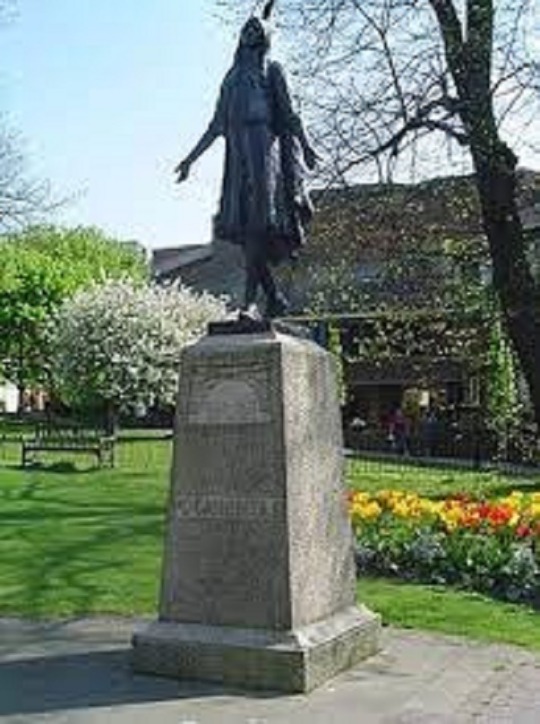
View On WordPress
0 notes
Text
Secretary Zinke Joins Tribal Chiefs in Celebrating Federal Recognition for Seven Virginia Tribes at Site of Historic Powhatan Headquarters
Secretary Zinke Joins Tribal Chiefs in Celebrating Federal Recognition for Seven Virginia Tribes at Site of Historic Powhatan Headquarters
Interior Secretary with Viriginia tribal leaders.
Published October 4, 2018
GLOUCESTER, Va. — U.S. Secretary of the Interior Ryan Zinke hosted an event today with Tribal leaders celebrating Virginia’s seven federally recognized tribes at Werowocomoco on the York River in Gloucester County. This site is believed to have been a place of leadership and spiritual importance to American Indians as…
View On WordPress
1 note
·
View note
Text
TO: ELIZABETH WARREN THAT ACCURSED THE PRESIDENT OF THE UNITED STATES BY CALLING HER 'POCAHONTAS' AS USING A 'RACIAL SLUR'. MRS WARREN NEED TO STUDY OR READ THE HISTORY OF THE NICKNAME 'POCAHONTAS'. I'M SURE SHE IS SO INOGRANT AND EAGER TO BAD-MOUTH THE PRESIDENT THAT SHOW HOW LITTLE SHE KNOWS. SO, I'LL HELP HER OUT! HISTORY OF THE NAME POCAHONTAS BELOW:
Pocahontas was the nickname of Mataoaka, a young emissary between native tribes and English setters in North America's early Colonial period. Pocahontas was the daughter of Powhatan, an important chief of several tribes of Algonquian Indians in the Chesapeake Bay region (along the coast of Virginia). Although she is one of the most famous Native Americans in history, biographical details are based on few resources and murky at best. Much of the Pocahontas story came from Captain John Smith (15 More »
Name at Birth: Mataoaka
Born: c. 1595 (Werowocomoco, Virginia)
See Also: · Wikipedia
Search For: · Thomas Dale
The 'nickname' Pocahontas' is not a 'Racial Slur unless Elizabeth Warren believe that name is 'racial' herself. In other words, a 'hit dog' will holler.
1 note
·
View note
Text
I have had versions of this conversation too many times
Person: you worked in an archaeology lab? that’s cool!
Me: I worked for the archaeologists who excavated Werowocomoco! It was so cool!
Person: what
Me: uh... Powhatan’s capital city? You know
Person: who
Me: you know Pocahontas
Person: yeh I’ve seen that movie!
Me: ...
Person: they didn’t have cities though, they were Indians
Me: ... they did, there were literally thousands of civilizations and cities and-
Person: yeah whatever, what else did the archaeologists do
Me: they also worked at some house Thomas Jefferson stayed at
Person: THAT IS SO COOL!!!
Me: kill me
4 notes
·
View notes
Photo

Story is not mine I did not write this just found the research on the web Source:http://www.ancient-origins.net/history-famous-people/true-story-pocahontas-not-told-disney-002285
Pocahontas
The True Story of Pocahontas as NOT told by Disney
Most people are familiar with the story of Pocahontas – the Native American princess who fell in love with Englishman John Smith during the height of conflict between the English settlers and the indigenous people of the Americas.
In 1995, Disney released an artistically beautiful animated film showing the supposed events that unfolded between John Smith and Pocahontas. Although Disney is known for creating fictional tales, many people believed that Disney’s account of the life of Pocahontas was a true reflection of past events: the love between Pocahontas and John Smith, the bravery Pocahontas showed when saving John Smith’s life, and the tragic ending when John Smith returned to England for medical treatment. However, this depiction is a far departure from the actual events that occurred, and from the real life of Pocahontas.
Disney produced a romanticized and inaccurate portrayal of the life of Pocahontas.
It is believed that Pocahontas was born around 1595 to a Powhatan chief. Her given name at birth was Matoaka, although she was sometimes called Amonute. “Pocahontas” was a derogatory nickname meaning “spoiled child” or “naughty one.” Matoaka’s tribe was a part of a group of about thirty Algonquian-speaking tribes located in Tidewater, Virginia.
During Matoaka’s childhood, the English had arrived in the ‘New World’ and clashes between the colonizers and the Native Americans were commonplace. In 1607, John Smith, an Admiral of New England and an English soldier and explorer, arrived in Virginia by ship, with a group of about 100 other settlers. One day, while exploring the Chickahominy River, John Smith was captured by one of Powhatan’s hunting parties.
He was brought to Powhatan’s home at Werowocomoco. The accounts of what happened next vary from source to source. In John Smith’s original writing, he told of having a large feast, after which he sat and spoke with Chief Powhatan. In a letter written to Queen Anne, John Smith told the story of Matoaka throwing herself across his body to protect him from execution at the hands of Powhatan. It is believed that John Smith was a pretentious man who told this lie to gain notoriety. In the Disney version, Matoaka/Pocahontas is depicted as a young woman when she saved John Smith, but by his accounts, she was only a 10-year-old child when these events occurred, and therefore highly unlikely that there was any romance between
Matoaka often visited the settlement at Jamestown to help the settlers during times when food was in short supply. On 13 th April, 1613 AD, during one of these visits, Samuel Argall captured Matoaka to ransom her for some English prisoners held by her father. She was held hostage at Jamestown for over a year. During her captivity, tobacco planter John Rolfe took a ‘special interest’ in the attractive young prisoner, and he eventually conditioned her release upon her agreeing to marry him. Matoaka was baptized ‘Rebecca’ and in 1614, she was married John Rolfe - the first recorded marriage between a European and a Native American. Their union is said to be the first recorded marriage between a European and a Native American.
Two years later, John Rolfe took Matoaka to England to use her in a propaganda campaign to support the colony of Virginia, propping her up as the symbol of hope for peace and good relations between the English and the Native Americans. ‘Rebecca’ was seen an example of a civilized ‘savage’ and Rolfe was praised for his accomplishment in bringing Christianity to the ‘heathen tribes’. While in England, Matoaka ran into John Smith. She refused to speak with him, turning her head and fleeing from his presence – a far cry from the undying love between the two as portrayed in the Disney movie. In 1617, the Rolfe family boarded a ship to return to Virginia. However, Matoaka would not complete this journey home. She became gravely ill – theories range from smallpox, pneumonia, or tuberculosis, to her having been poisoned – and she was taken off the ship at Gravesend where she died on March 21, 1617. It is believed she was 21 years old when she died. Sadly, there were no fairy tale endings for Matoaka.
3 notes
·
View notes
Text
Multimedia Journal 2: Film
Pocahontas
Pocahontas is a Disney animated story about how princess Pocahontas fell in love with John Smith. All of this makes for the great making of film, although the truth is that the Disney make of this tale is far different from what had really happened. Instead of going into great detail about the Disney version of this real-life heroine I would like to focus on the true events surrounding her life.
To start things off, Pocahontas was not the real-life name of the Native American princess this film is so loosely based on. According to biography.com, Pocahontas’s real name was Matoaka. Matoaka was born September 17th, 1595 in Tidewater, James City County, Virginia. She was born one of many daughters to Wahunseneca, a Powhatan chief.
According to Biography.com, Matoaka was a North American princess, ambassador, and peacemaker. She helped promote peace between her tribe and the first American settlers. The Virginia colonists were led by John Smith. The story goes that members of the Powhatan tribe were going to execute John Smith until Matoaka (about ten at the time) steps up and persuades her father to work on maintaining a plan of peace with the new settlers. At first this plan worked until more settlers kept landing on Powhatan land. In an audacious move the British also attempted to give Wahunseneca (chief of the land) the title of king over his own region!
After Smith returned to England hostilities continued to get worse between the British and Powhatan tribes resulting in Pocahontas eventually being taken hostage by the British. Her father would not negotiate for her return, which resulted in her being placed into the custody of two English settlers. In 1614 Matoaka goes on to marry John Rolfe in a Christian ceremony. She then switches her name to Rebecca Rolfe (after assuming her new husbands last name). She goes on to have one child with Rolfe named Thomas Rolfe. Unfortunately at the age of 22 Matoaka (now Rebecca Rolfe) falls gravely ill and is said to have passed away due to tuberculosis.
The real-life events of Pocahontas’s (or should I say Matoaka) life are not quite as romantic as those portrayed in the Walt Disney film, but they do however make for a much more child friendly, musical version of what could have happened.
1616, Simon van de Passe
https://www.pbs.org/wgbh/nova/pocahontas/lege-nf.html
According to NOVA on the PBS website, “this engraving is the only known portrait of Pocahontas rendered from life…it was the first of many depictions of Pocahontas intended to demonstrate that Native American could adopt the demeanor of a “civilized” European.”
This is clearly a bit different than the Walt Disney Studio’s version of Pocahontas below. According to Lisa Q. Wolfinger (one of the producers of “Pocahontas Revealed” a Nova special for PBS), Pocahontas more than likely would not have been wearing any clothing at the time she first met John Smith. “According to John White's images and related text, a Powhatan girl wore no clothing before puberty. From about the age of 12 onward, she donned a deerskin skirt, perhaps decorated with beads or carved with figures from nature. Powhatan women also adorned themselves with tattoos and body paint derived from roots, as well as necklaces, bracelets, and earrings strung with freshwater pearls, shell beads, copper, animal teeth, or beads of bone.”
https://www.bustle.com/articles/91394-6-historical-inaccuracies-in-disneys-pocahontas-but-that-doesnt-mean-you-stop-painting-with-all
Disney does use a bit of accuracy by giving Pocahontas both a tattoo on her arm and dressing her in what appears to be deerskin, something tells me they went to extremes a bit when deciding what boob and waist size to give her. I mean she looks like she has the body of a real-life Mattel Barbie doll!
https://twitter.com/Florenciiaa19/status/352806526643220481
The photo above is a statue of Rebecca Rolfe (aka Disney’s Pocahontas) that is in Jamestown, Virginia. I think it’s safe to assume this is a little closer to how the real Pocahontas would appear in real life.
https://www.popsugar.com/entertainment/Who-Voiced-Pocahontas-43957948
Irene Bedard is said to have been the main inspiration behind the look of the Walt Disney princess. I give Disney props for choosing a Native American actress to voice Pocahontas, and also use her as a physical model for the character. This being said, look at the color difference in Irene Bedard’s complexion and Pocahontas’s complexion. Clearly Disney was falling back on old world stereotypes of what color Native American’s skin should be as Pocahontas’s skin tone is clearly much more orange than Irene’s.
Sources used:
1. Gabriel, Mike, Eric Goldberg, Carl Binder, Susannah Grant, and Philip LaZebnik. Pocahontas. United States: Buena Vista Pictures Distribution, Inc, 1995.
2. History.com Staff. “Pocahontas.” History.com, A&E Television Networks, 2009, www.history.com/topics/native-american-history/Pocahontas.
3. https://www.biography.com/people/pocahontas-9443116
4. Pocahontas Revealed homepage Image Composite: (dig showing postholes) Courtesy Association for the Preservation of Virginia Antiquities; (historical reenactment) © NOVA/WGBH Educational Foundation
5. Images of a Legend Images: (1616, 1624, early 1850s, c. 1868, 1870, 1852) Courtesy Virginia Historical Society; (likely 1700s) Courtesy National Portrait Gallery, Smithsonian Institution; (1590) Courtesy The Library at the Mariners' Museum; (1825, 1836-40) Courtesy Architect of the Capitol; (1994) Courtesy Virginia artist Mary Ellen Howe; (1995) Walt Disney Studios
6. An Introduction to "Pocahontas: Her Life & Legend" Image: (1994) Courtesy Virginia artist Mary Ellen Howe
7. The Science of Jamestown Images: (Facial reconstruction, dig showing postholes, pottery fragments, tree rings) Courtesy Association for the Preservation of Virginia Antiquities; (dig showing trenches, metal fragments) © 2007 The Werowocomoco Research Group
0 notes
Link
More than 60 people attended a meeting in Gloucester Wednesday to hear about the state’s plans to turn a large piece of land into a park aimed at interpreting the culture and history of the Algonquin tribe.
The 644-acre Timberneck Farm site would be part of the Middle Peninsula State Park along with Rosewell, the 18th-century plantation nearby.
While Timberneck sits about 10-12 miles from Werowocomoco — where Chief Powhatan and his daughter Pocahontas are believed to have lived — the state Department of Conservation and Recreation envisions Timberneck Farm being the interpretive site for Werowocomoco and more broadly, the Tsenacomoco region, which Algonquins occupied.
Architects from the landscaping firm Nelson Byrd Woltz showed preliminary renderings Wednesday that include an interpretive pavilion used for educating visitors about the Algonquin tribe, dirt walking trails, agricultural demonstrations, a 30-site campground, a boat launch, rental cabins, open field space, picnic shelters, a visitor center and more.
0 notes
Text
It's really such a simple thing to love about Prey, but the way they shot all of the village scenes feels real, it didn't feel romantisized like the way a lot of other films shoot Native scenes.
Like comparatively to something like The New World by Terrence Malick, Werowocomoco is frequently called "an Eden" in the script, with its Powhatan inhabitants compared to things like "fairies" and "nymphs" (I'm not joking, I'm quoting). And even in the final version of the film, shots of Werowocomoco are overlaid with narration by John Smith talking about how everything is perfect there, so its STILL coming from a colonizers perspective & prioritizing HIM and how HE sees it. Werowocomoco wasn't a perfect utopia with perfect Powhatan inhabitants, no place is like that. The area had been struggling a little due to a reduction in deer population (their main source of clothing and meat), and a little later they'd had a drought so the crops were bad, and of course they had conflicts with other tribes at the time, like the Massawomeck. But the movie doesn't show that. Nobody in these scenes ever seem to be doing anything or working or just living their lives. Its too... perfect. Movies tend to over romantisize Native people like this & it keeps the Noble Savage idea going.
But then in Prey, it doesn't feel like that. It feels like a real village. It feels like a real community of people going about their business & doing chores & work & relaxing & being together. Naru feels relatable because she's annoyed to wake up early in the morning, and she wants to stay in her warm bed. You see women working on hide tanning and going out early to go foraging (another thing Naru looks annoyed by). Theres moms carrying crying babies not because something bad or scary happened, but because babies cry. Naru brings home dinner and clearly spends time training herself & her dog. They have to send out hunters to deal with a cougar that's been causing problems for them. Naru has to go out and get medicine, almost like going to the pharmacy. There's not really any romantisization, there's no implying that the Comanche's lives were "perfect" at this time, it's just them living their lives and dealing with whatever problems hit them, and they feel real.
170 notes
·
View notes
Text
1. First British Colonies
-PRE-HISTORY OF NORTH AMERICA
Settlement of the North American continent began at least 15,000 years ago, after the ocean level had dropped to expose a landmass beneath the modern-day Bering Strait. The people who first crossed from Asia into North America were probably small family groups or hunting parties, who came both by foot and in watercraft along the North American coastline. Over the next several thousand years, the descendents of these people developed unique societies across North America with complex political, economic, and religious systems and lifeways adapted to particular local environments.
Archaeologists refer to the earliest North Americans as Paleoindians. What is known about them comes largely from evidence found in caves, as caves offered both temporary shelter for these highly mobile groups and excellent conditions for archaeological preservation. The bones of butchered animals, flaked stone tools, and the remnant
1. Facts:
Prehistoric Shelters - Prehistoric people lived in huts and caves.
They built their huts using the large bones of the giant mammals for frames.
They covered the bone frames with branches and earth.
Prehistoric people had two homes. One home for winter and one home for summer. The winter home was near where the animals grazed in winter. The summer home was near where the animals grazed in summer.
The prehistoric hunters were nomads and followed the mammoths to their grazing lands.
When they were actually out on a hunt, they would camp out.
Prehistoric DNA - DNA findings from the Human Genome Diversity Project show that Native Americans came across Beringia from a homeland in Mongolia. This happened between 15,000 and 30,000 years ago. The DNA also shows that some prehistoric people left North America and went back across the land bridge to Asia.
Among the more popular misconceptions were those holding that the first residents of the continent had been members of the Ten Lost Tribes of Israel or refugees from the lost island of Atlantis, that their descendents had developed the so-called Mound Builder culture, and that Native Americans had later overrun and destroyed the Mound Builder civilization. These erroneous and overtly racist beliefs were often used to rationalize the destruction or displacement of indigenous Americans. Such beliefs were not dispelled until the 1890s, when Cyrus Thomas, a pioneering archaeologist employed by the Smithsonian Institution, demonstrated conclusively that the great effigy mounds, burial mounds, and temple mounds of the Northeast and Southeast culture areas had been built by Native Americans.
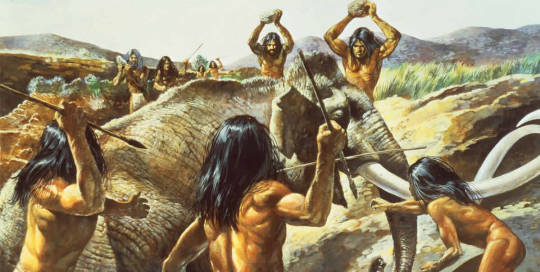
-NATIVE AMERICANS: SIOUX, APACHE...
-FIRST ATTEMPT: JOHN CABOT
John Cabot, Italian Giovanni Caboto, (born 1450, Genoa —died 1499), navigator and explorer who by his voyages in 1497 and 1498 helped lay the groundwork for the later British claim to Canada. The exact details of his life and of his voyages are still subjects of controversy among historians and cartographers.
In 1496 Cabot made a voyage from Bristol with one ship, but he was forced to turn back because of a shortage of food, inclement weather, and disputes with his crew. In May 1497, however, he set sail from Bristol in the small ship Matthew, with a crew of 18 men. He proceeded around Ireland and then north and west, making landfall on the morning of June 24.

-FIRST ARRIVALS:
Virginia, Jamestown
In 1607, Jamestown became Great Britain's first settlement in North America. The location of Jamestown was chosen due to it being easily defended since it was surrounded by water on three sides. In addition, the water was deep enough for the colonists' ships. Finally, Native Americans did not inhabit the land. The first winter for the pilgrims who settled at Jamestown was extremely hazardous.
The London Company founded Virginia during the reign of King James I (1566-1625).
In 1624, Jamestown was made a royal colony. It had a high mortality rate due to disease, colonial mismanagement, and raids from Native Americans. Because of these issues, King James I decided to revoke the charter for Jamestown in 1624. At that point, there were only 1,200 settlers left out of 6,000 that had arrived there over the years. At this point, Virginia was brought into existence and became a royal colony that included the area of Jamestown.

Pocahontas
Pocahontas is also known as the "Indian princess" who was key to the survival of the early English settlements in Tidewater, Virginia; saving of Captain John Smith from execution by her father (according to a story told by Smith)
During Matoaka’s childhood, the English had arrived in the ‘New World’ and clashes between the colonizers and the Native Americans were commonplace. In 1607, John Smith, an Admiral of New England and an English soldier and explorer, arrived in Virginia by ship, with a group of about 100 other settlers. One day, while exploring the Chickahominy River, John Smith was captured by one of Powhatan’s hunting parties. He was brought to Powhatan's home at Werowocomoco. The accounts of what happened next vary from source to source. In John Smith’s original writing, he told of having a large feast, after which he sat and spoke with Chief Powhatan. In a letter written to Queen Anne, John Smith told the story of Matoaka throwing herself across his body to protect him from execution at the hands of Powhatan.

Virginia Company
The Virginia Company refers collectively to two joint stock companies chartered under James I on 10 April 1606 with the goal of establishing settlements on the coast of North America. The companies were called the "Virginia Company of London" (or the London Company) and the "Virginia Company of Plymouth" (or the Plymouth Company); they operated with identical charters but with differing territories. An area of overlapping territory was created within which the two companies were not permitted to establish colonies within one hundred miles of each other. The Plymouth Company never fulfilled its charter, but its territory was claimed by England and became New England.
As corporations, the companies were empowered by the Crown to govern themselves, and they conferred that right onto their colonies. The Virginia Company failed in 1624, but the right to self-government was not taken from the colony. The principle was thus established that a royal colony should be self-governing, and this formed the genesis of democracy in America.

Black Africans
It is often assumed that black Africans, out of all human populations, most closely resemble our common ancestral state. After all, is not Africa the cradle of humanity ? And did not modern humans spread ‘out of Africa’ some 50,000 or so years ago?
Indeed, we are all offspring of Africa. What is less true is the assumption that evolution stood still there while continuing elsewhere. Yes, some African groups do approximate ancestral Homo sapiens in their mode of subsistence, family structure, and physical appearance. These are the Khoisan and pygmy peoples. They still live by hunting and gathering, are overwhelmingly monogamous, and have light-brown skin and gracile, almost childlike bodies.
But they now inhabit only a few marginal environments, essentially the Kalahari and patches of rain forest. As elsewhere, time has moved on. There have arisen new populations who differ as much from ancestral Homo sapiens as do Europeans and Asians. These are the ‘true’ black Africans.
On the basis of genetic and archaeological data, black Africans seem to have radiated from a relatively small West African and possibly pygmy population within the last 20,000 years.
0 notes
Photo

(via » 10 Places Serving Native American Cuisine WalkingShield)
The winery highlights early winemaking in the U.S., and the year-old Werowocomoco (place of leadership) highlights indigenous ingredients.
#american indians#americanindians#american indian#americanindian#native americans#nativeamericans#native american#nativeamerican#indigenous people#indigenouspeople
0 notes
Text
Pocahontas revealed!
This is a digital likeness of Pocahontas, taken from an engraving of her done in England, her only verified portrait—2 or 3 paintings are all controversial. Born about 1597 in the Mattaponi village of Werowocomoco, she died on the Thames River in England. She was brown-skinned, though she may have worn powder. (I am still doing research, but I am either a direct or collateral descendant)

View On WordPress
1 note
·
View note
Photo
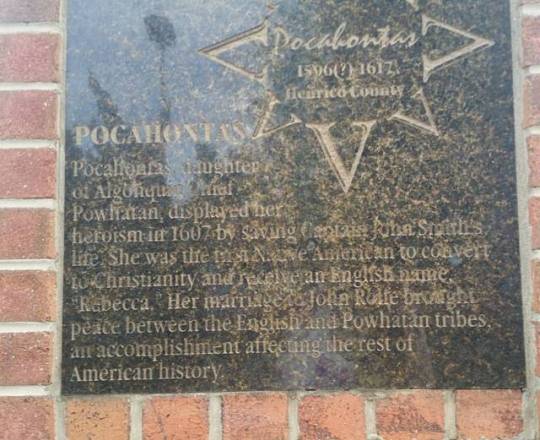
So the week of Virginia history on instagram continues with the fourth person to do something in the state of Virginia. Pocahontas, Native American woman who helped Captain Smith with the colonial settlement at Jamestown, Virginia. Then moved to UK and married John Rolfe. Born: 1596 Died: March 1617 Age: 21 Town: Werowocomoco, VA #history #virginiaboardwalk #virginiahistory #cosplaymom #hometeacher #teachhistory #havefunlearning #historylesson #pochahontas #captainjohnsmith #virginia #jamestown #johnrolfe (at Jamestown, Virginia)
#jamestown#hometeacher#havefunlearning#virginiaboardwalk#teachhistory#virginia#captainjohnsmith#cosplaymom#history#johnrolfe#historylesson#pochahontas#virginiahistory
0 notes
Text
Opening national park in Gloucester will take years - Daily Press
Daily Press
Opening national park in Gloucester will take years Daily Press It will take years before the planned park at the historic Werowocomoco site will open for visitors, according to the National Park Service. "It takes a while for parks to come online," Chuck Hunt, park service superintendent, told the Gloucester Board ...
0 notes